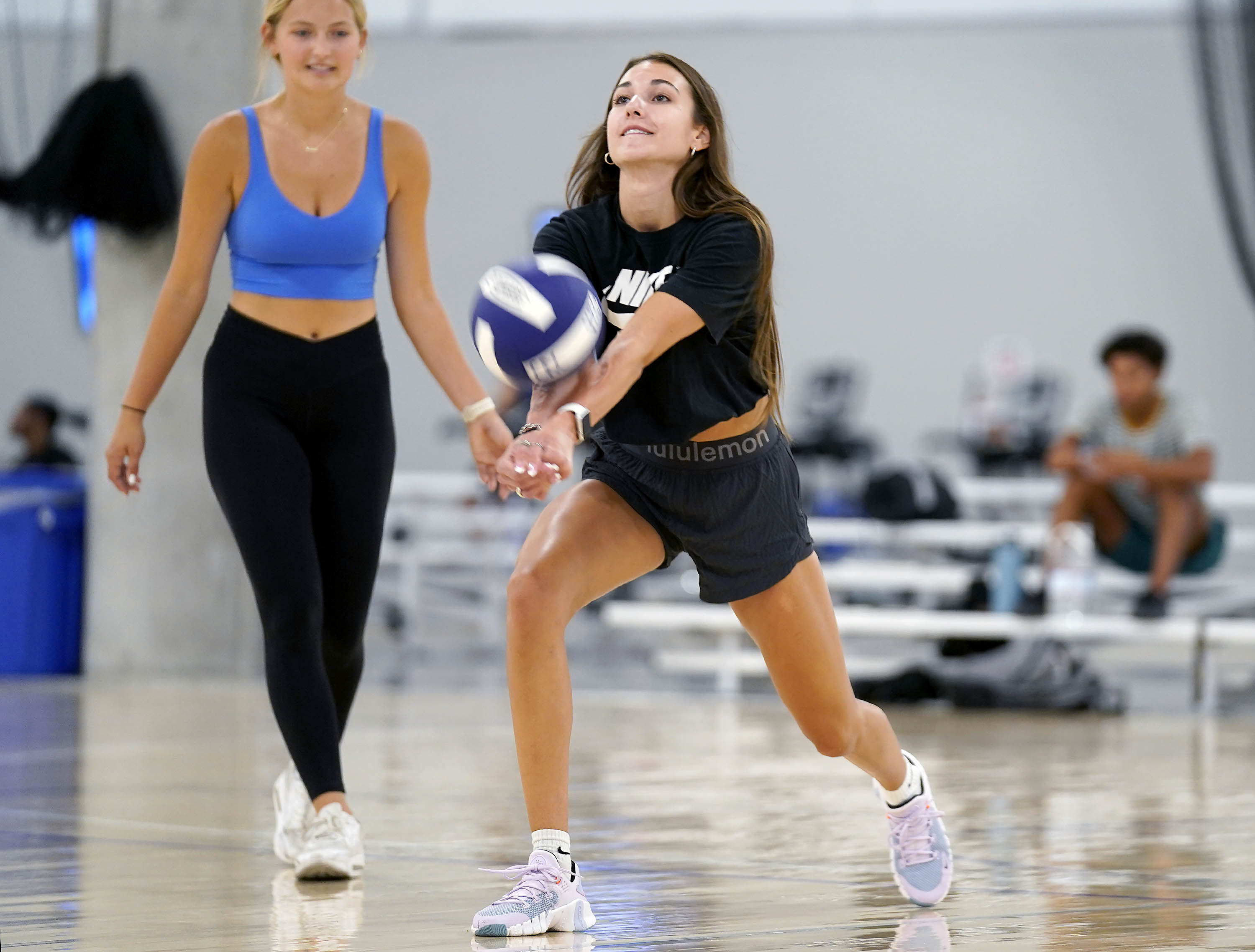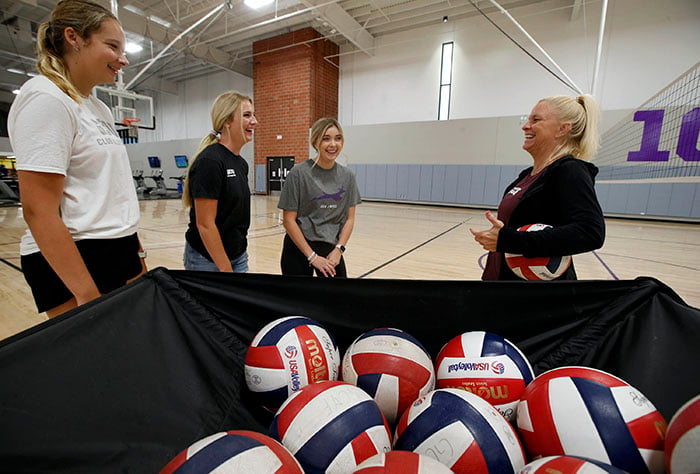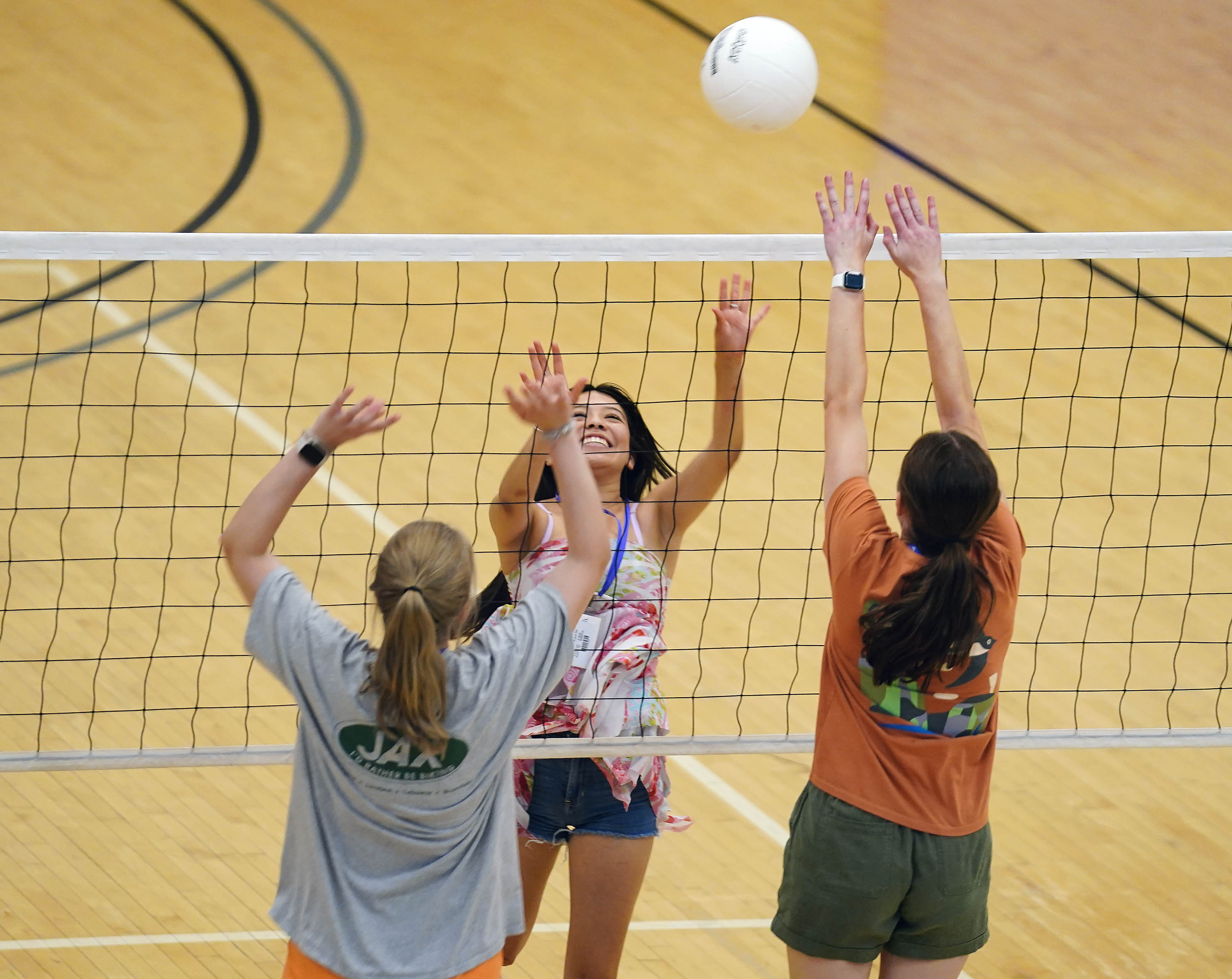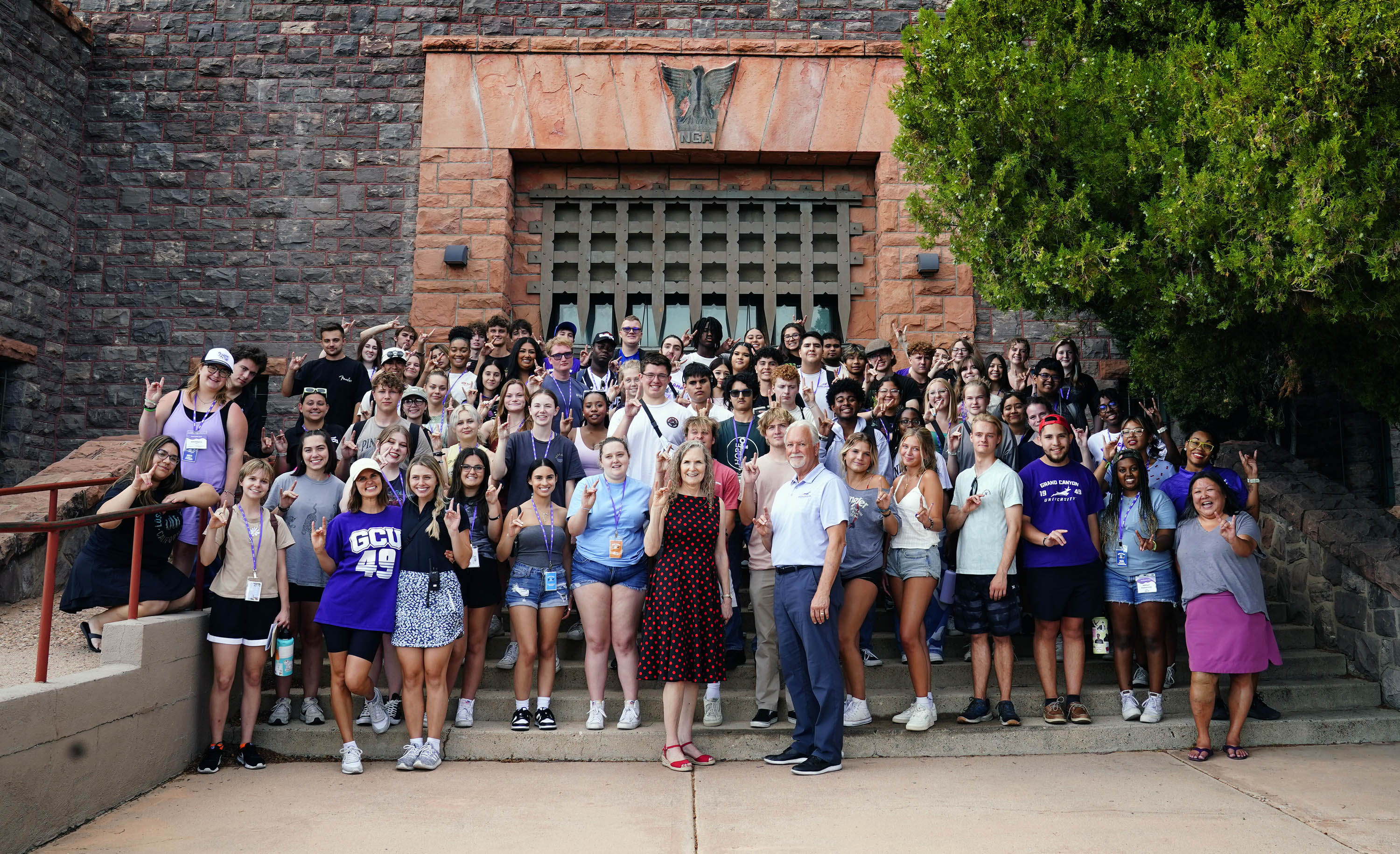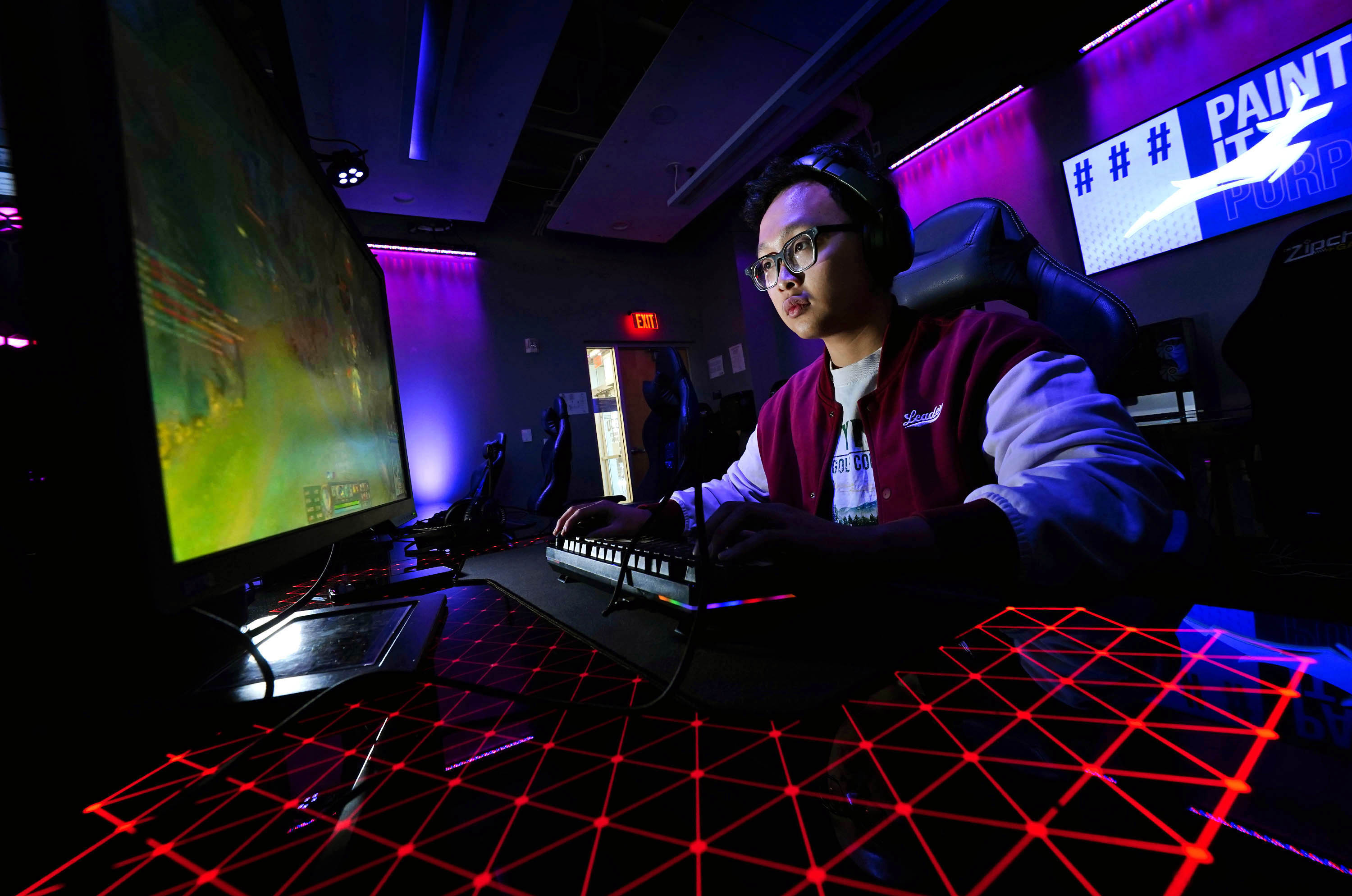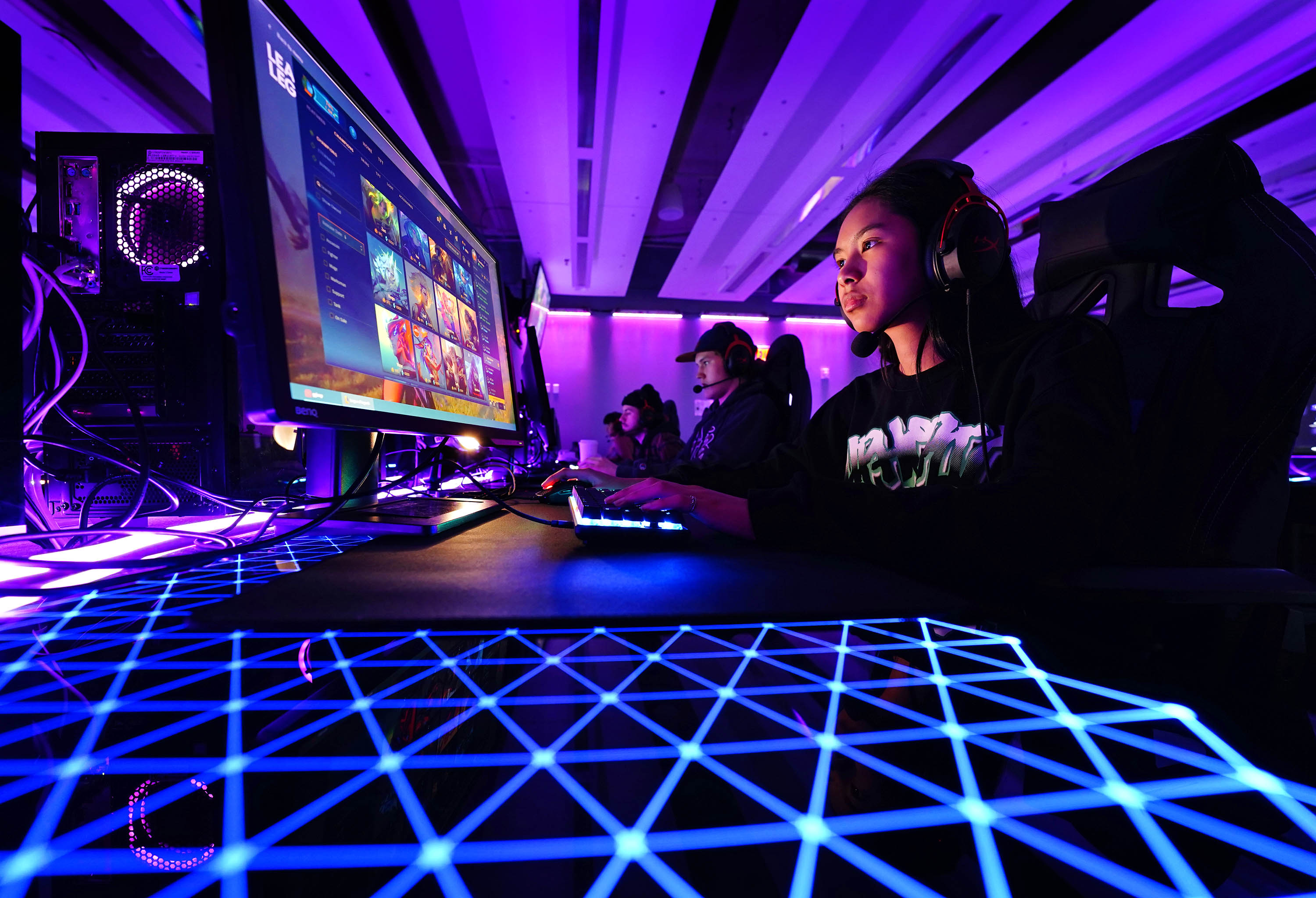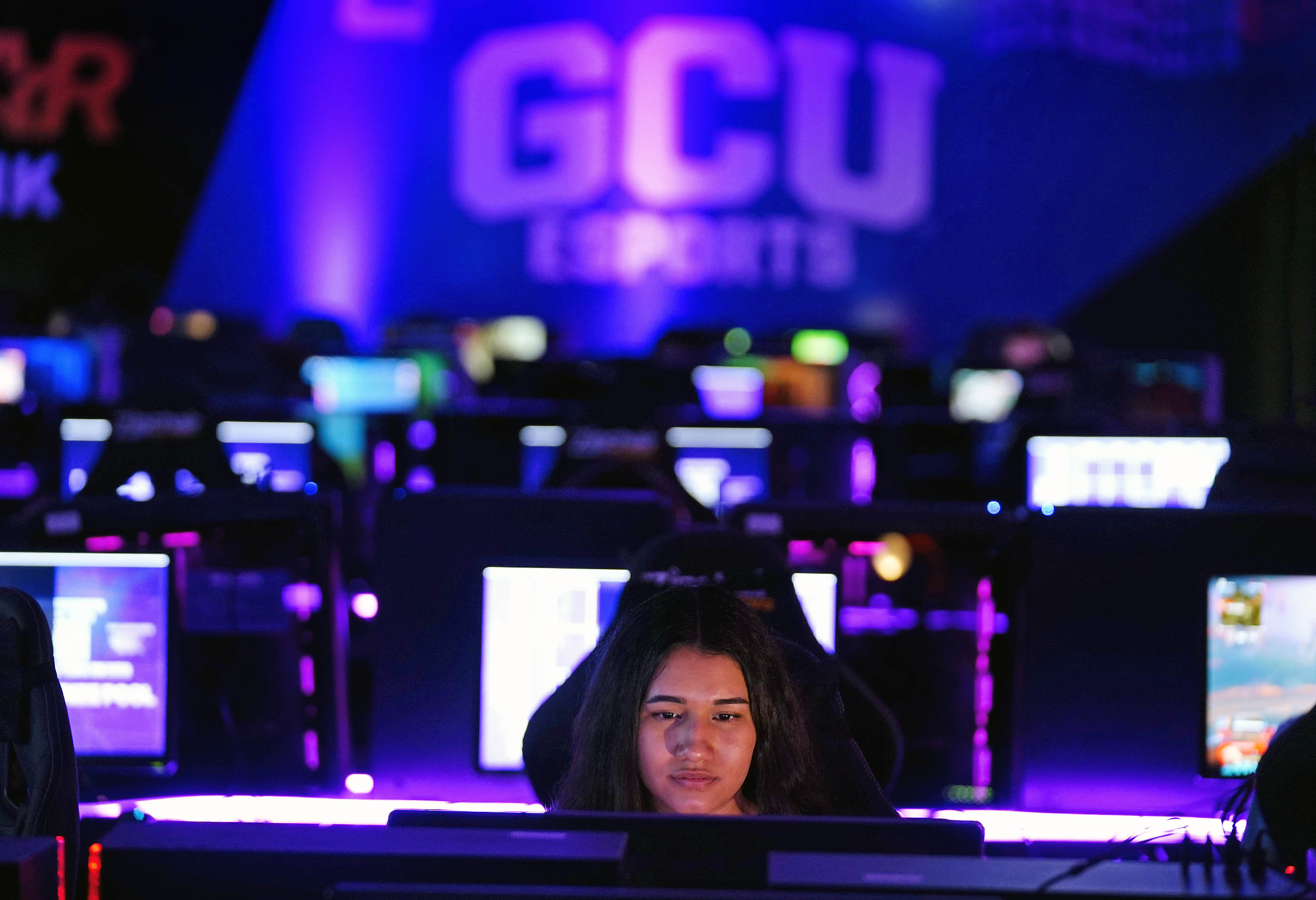
Editor’s note: This story is reprinted from the February issue of GCU Magazine. To view the digital version, click here. Look for the next issue of the magazine in April.
By Lana Sweeten-Shults
GCU News Bureau
If conferences were rock concerts, Grand Canyon University’s online faculty would be the stars. When they do presentations at the big kahunas of online learning conferences – the Online Learning Consortium, Eduventures Summit and Teaching Professor, to name a few – the rooms are practically standing room only.
“It does seem like, at least when we’re there, that we are the innovators in that technology area for online learning,” said Rick Holbeck, Executive Director of Online Full-Time Faculty. “They know we have a reputation now, so they come over to see all the things we’re doing.”
Vice President of Faculty Operations Kelly Palese knows firsthand just how popular the GCU online faculty are at these conferences.
“Their rooms are PACKED. I know that because I’ve been to a couple of them. These guys live and breathe online education all day long,” said Palese, and it’s easy to see why they
command such attention: “They are able to provide real, tangible takeaways. So people are listening to them, and they’re a trusted source of knowledge.”
Simply said, they’re the show.
GCU online faculty are powerhouses when it comes to presenting their scholarly work. Between 2012 and 2017, they led 163 presentations.
Beyond their reputation as in-demand speakers, “our online full-time faculty is very involved in research scholarship of teaching and learning,” Palese said. Their work has been featured in 138 publications, Inside Higher Ed and Magna Publications among them, in the same time period.
“The online full-time faculty have really become the leaders in presenting and publishing their research,” she said.
When online full-time faculty member Sarah Robertson speaks at conferences, she tends to field questions boomeranged at her from other educators clamoring to find out what’s in the secret sauce.
At one event, Robertson said, conference attendees wanted to know how GCU’s virtual educators found time to collaborate on a tool for Web 2.0 – the term that describes the move away from static to social, collaborative and interactive web pages.
“They wanted to know what kind of resources were provided to us from the University’s standpoint to make this happen. And we – our – answer was, ‘Well, we worked together to make it.’ They said, ‘So you were not a committee? You didn’t get paid anything extra?’”
Robertson replied, “We just did it.”
The faculty is able to do all they do because GCU’s online faculty work together in the same facility. She is one of 160 full-time online faculty – a consortium of concentrated online teaching brainpower – on the second floor of Building 71, near the corner of 27th Avenue and Camelback Road.
Working in the same building might not sound like anything groundbreaking, but it is. The model is practically unheard of in the online teaching world. At most universities, online teachers are lone wolves working from a remote location.
GCU’s team can accomplish so much because they simply can poke their heads out of their cubicles and talk to their co-workers. They can, with some immediacy, share techniques, pass on new web tools, work with a classroom dedicated web-development team called AWS, or even collaborate on academic papers.
“It allows people to collaborate and to work together on things instead of being a separate entity at home somewhere,” Holbeck said.
“It makes you, really, better teachers as well,” said John Steele, an associate professor of online instruction. “We sit by each other so we’re exposed to each other’s ideas and the way we all do things differently.”
Robertson said it’s easy to be overwhelmed by a problem but, with fellow online teachers around you, everyone pitches in to find a solution. She distinctly recalls conference attendees’ reaction to that one Web 2.0 project: “Their look was, ‘You have an environment where you have the kind of time (needed to bring a project to fruition) … where people were willing to just do things to work together’” without a committee?
“We found out knowledge is not just power by yourself,” Robertson added. “When you have a community that’s pushing forward an idea, it is said much more strongly than if you’re by yourself.”
What the faculty emphasizes is not only the latest tools – video chatting services such as Flipgrid or video conferencing via Zoom – but GCU’s push to make online learning as personal as possible.
“We create videos, video chatboards where students can actually talk to each other and see each other’s faces,” Holbeck said. “Just a lot of those kinds of things where they know there is a person on the other side of the computer.”
As for Steele and Robertson, they have collaborated on virtual teaching studies, such as one in which he did the video lectures for her class and vice versa.
“The whole class didn’t seem to have as much connection with me when John’s video lectures were posted in my class,” Robertson said.
Since then, she has realized how important it is to incorporate her own video lectures for better rapport with her students.
They have tested the Personalization Principle, which says students learn better using a more conversational rather than formal tone. They also are collaborating on an academic paper while other GCU online faculty are developing more Web 2.0 tools.
She asked Steele, “Can you imagine if we’d never built a relationship and then I’m supposed to work with you and we’d have to email back and forth? It’s easy to have discrepancies or miscommunication.”
Then she added, laughing, “I can just look at John and say, ‘I don’t know what you’re talking about.’”
That collaborative paper might be the subject of a future conference presentation. And attendees will be wondering, once again, how GCU online faculty – the rock stars of the online education world – do all the things they do.
They’re the show.
You can reach GCU senior writer Lana Sweeten-Shults at 602-639-7901 or at lana.sweeten-shults@gcu.edu. Follow her on Twitter @LanaSweetenShul.

